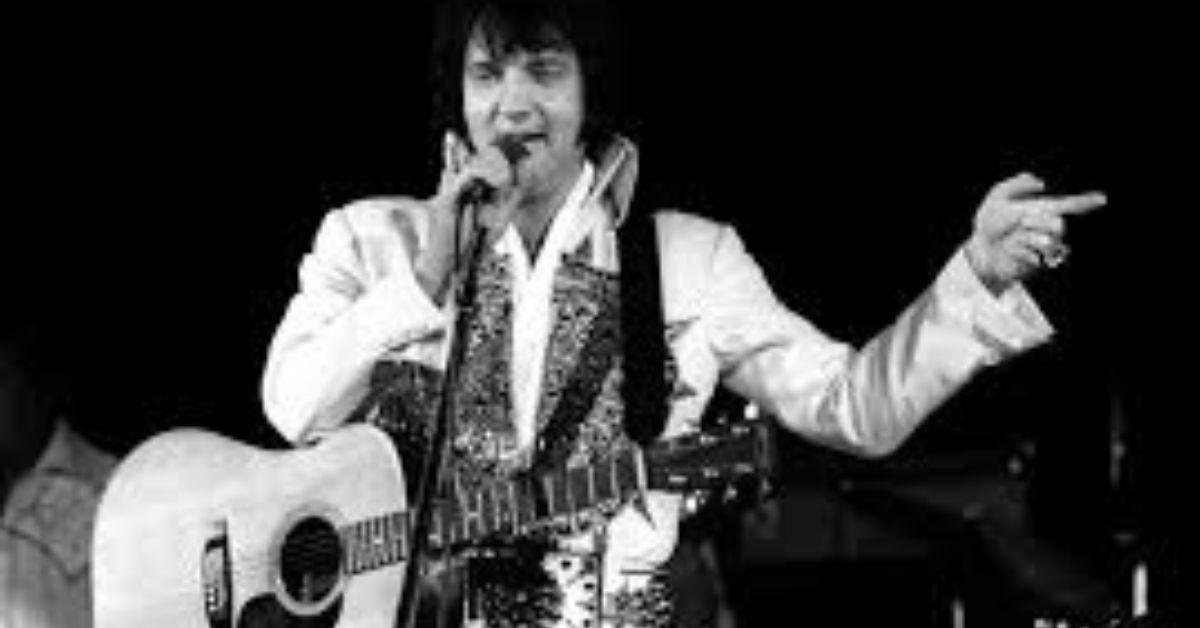Elvis Presley, the undisputed King of Rock and Roll, captivated audiences worldwide with his electrifying performances and magnetic charisma. However, towards the end of his life, Presley’s image underwent a transformation that would become etched in popular culture – the rise of “Fat Elvis”.
The Caricature of “Fat Elvis”
The image of a grossly obese, sloppy-looking Elvis Presley gained prominence in the late 1970s, largely due to caricatures and exaggerated depictions in the media. One of the most infamous examples was the July 1976 cover of National Lampoon, which featured a caricature of an extremely overweight Elvis. This image, along with other similar caricatures, led many non-fans to believe that Presley had always been sloppy-looking, which was not the case.
The Reality of Elvis Presley’s Weight Fluctuations
While Elvis Presley did struggle with his weight and appearance in the later years of his life, the “Fat Elvis” caricature was an exaggeration of his actual physical state. Presley’s weight fluctuations began in the 1960s and were attributed to his diet, which included a love for starchy foods that often gave him a soft, padded appearance. His increasing use of prescription drugs also contributed to his changing looks as the 1970s progressed.
The Impact of “Fat Elvis” on Popular Culture
The image of “Fat Elvis” has had a significant impact on popular culture, becoming a symbol of excess, indulgence, and the pitfalls of fame. It has been parodied and referenced in numerous films, television shows, and works of art, cementing its place in the cultural zeitgeist.
The Enduring Appeal of “Fat Elvis” Merchandise
The popularity of “Fat Elvis” has spawned a thriving market for merchandise, from t-shirts and mugs to figurines and posters. Fans and collectors alike have embraced the kitsch factor of these items, making them highly sought after among Elvis enthusiasts.
The Legacy of “Fat Elvis”
Despite the exaggerated depictions, the image of “FatElvis” has become an enduring part of Presley’s legacy. For some, it represents the tragic decline of a once-vibrant entertainer, while others find humor and nostalgia in the caricature. Regardless of one’s perspective, the “Fat Elvis” image has become a cultural touchstone, serving as a reminder of the complexities and challenges faced by celebrities in the public eye.
Conclusion
The enduring legacy of “Fat Elvis” is a testament to the power of popular culture and the enduring fascination with the life and times of Elvis Presley. While the caricature may not accurately reflect the true nature of Presley’s later years, it has become an indelible part of his story, serving as a reminder of the complexities of fame and the importance of remembering the essence of the artist behind the image.
FAQs
- What was the real reason for Elvis Presley’s weight gain?
- Elvis Presley’s weight gain was primarily due to a combination of factors, including his love for starchy foods, his increasing use of prescription drugs, and the stress of his hectic lifestyle and declining health.
- Did Elvis Presley always look like “Fat Elvis”?
- No, the “FatElvis” caricature was an exaggeration of Presley’s actual appearance in his later years. While he did struggle with his weight, the image of an extremely obese Elvis was not representative of his entire life.
- Why has the “Fat Elvis” image become so iconic?
- The “FatElvis” image has become iconic due to its prevalence in popular culture, its humorous and nostalgic appeal, and its ability to capture the complexities of fame and the challenges faced by celebrities in the public eye.
- Is there a market for “Fat Elvis” merchandise?
- Yes, there is a thriving market for “FatElvis” merchandise, with fans and collectors seeking out items such as t-shirts, mugs, figurines, and posters that feature the iconic image.
- How can we remember the true essence of Elvis Presley?
- To remember the true essence of Elvis Presley, it is important to focus on his music, his performances, and his enduring impact on popular culture. By celebrating his artistry and legacy, we can move beyond the caricatures and appreciate the King of Rock and Roll for the icon he truly was.










